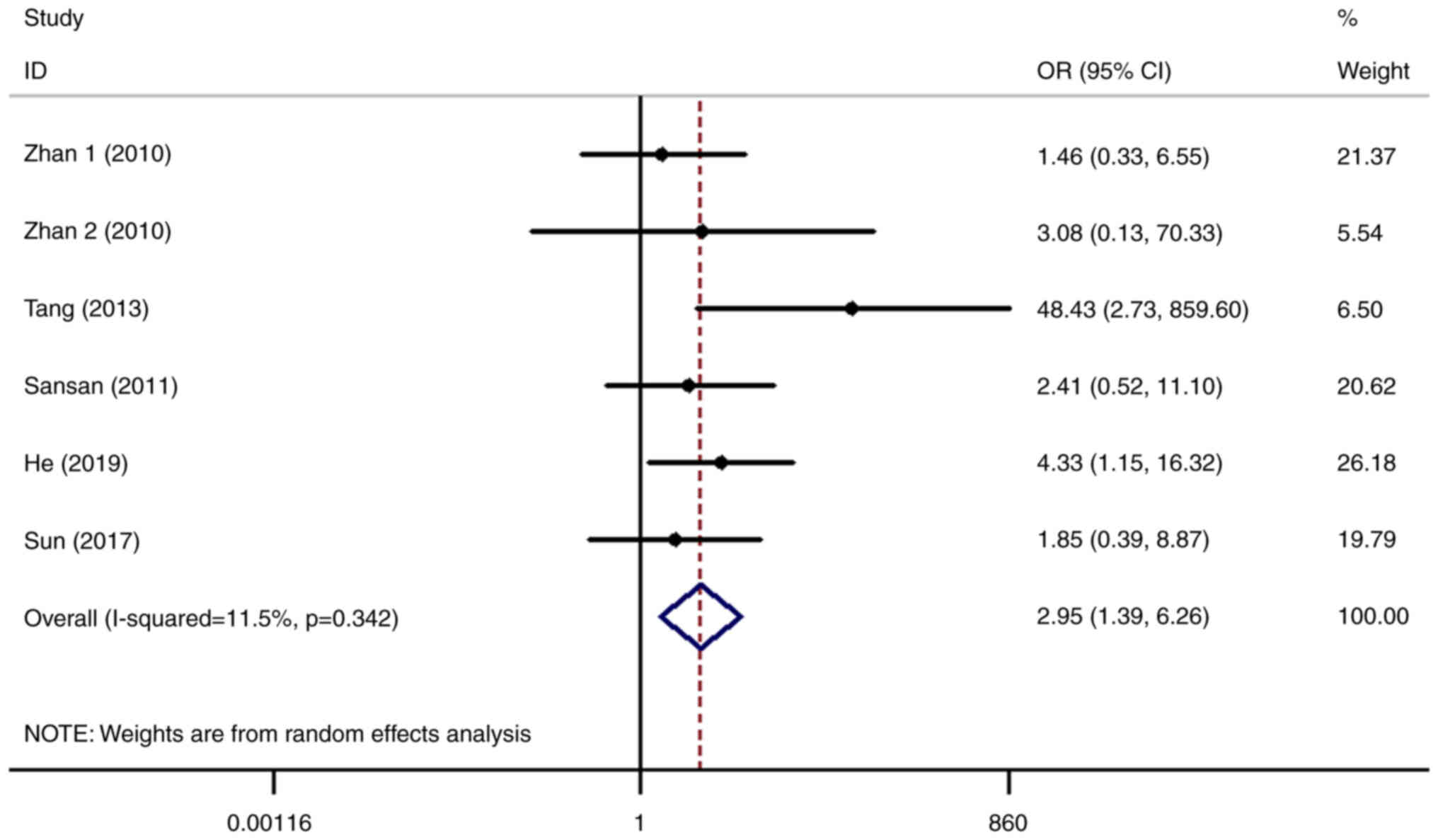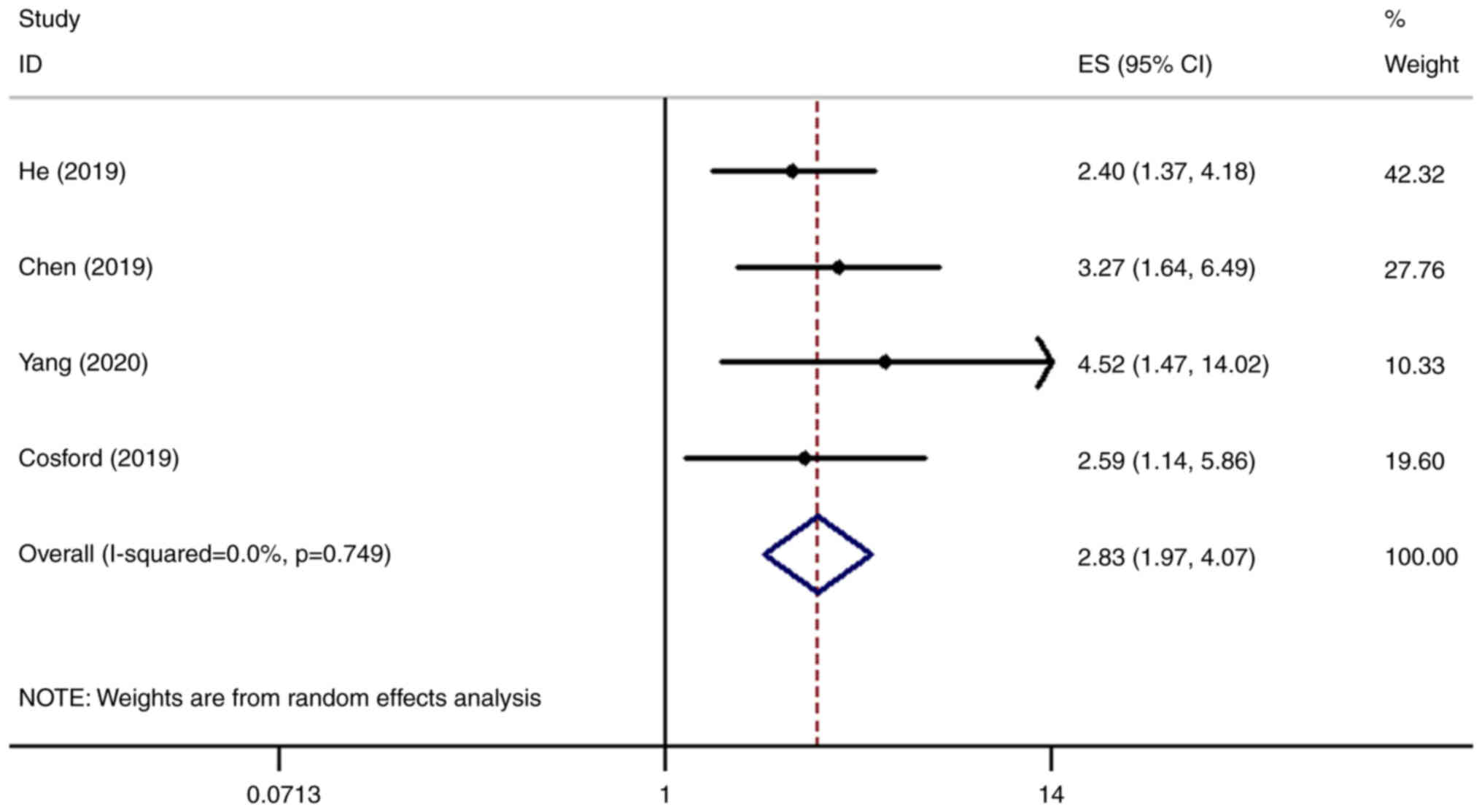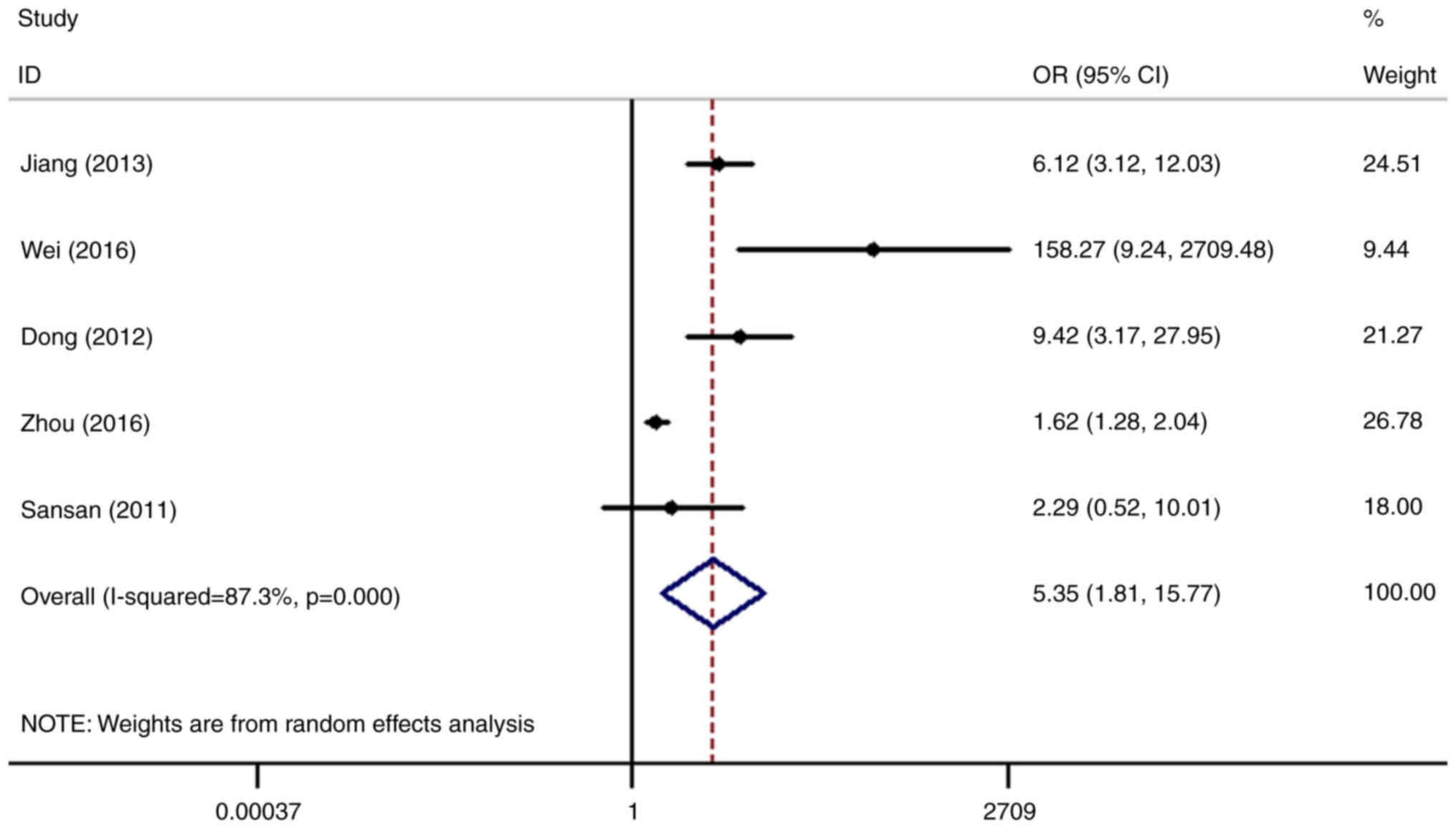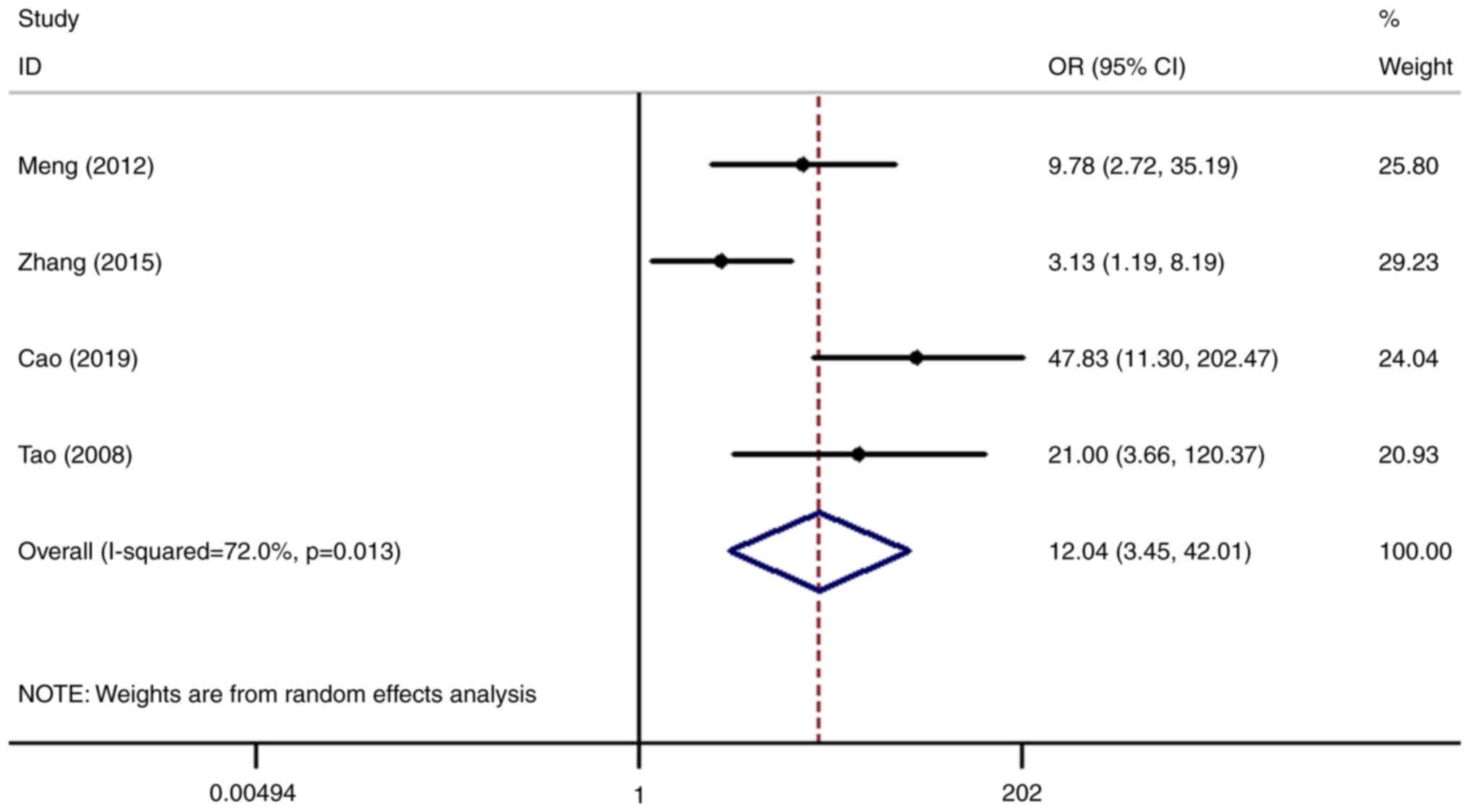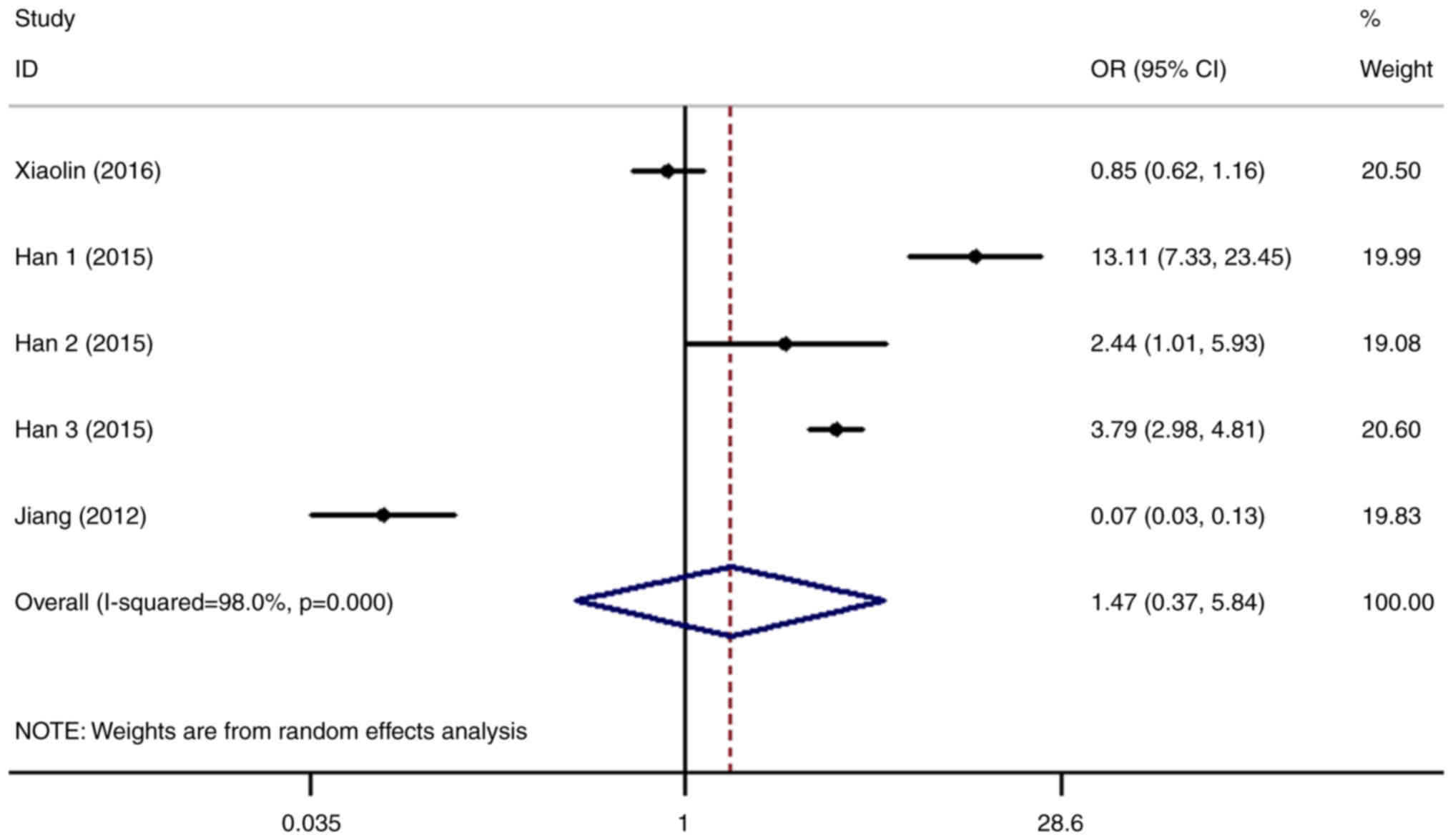|
1
|
Wang Q, Zhao WC, Fu XQ and Zheng QC:
Exploring the distinct binding and activation mechanisms for
different CagA oncoproteins and SHP2 by molecular dynamics
simulations. Molecules. 26:8372021. View Article : Google Scholar : PubMed/NCBI
|
|
2
|
Leung CON, Tong M, Chung KPS, Zhou L, Che
N, Tang KH, Ding J, Lau EYT, Ng IOL, Ma S and Lee TKW: Overriding
adaptive resistance to sorafenib through combination therapy with
src homology 2 domain-containing phosphatase 2 blockade in
hepatocellular carcinoma. Hepatology (Baltimore, Md). 72:155–168.
2020. View Article : Google Scholar : PubMed/NCBI
|
|
3
|
Cao M, Gao D, Zhang N, Duan Y and Wang Y,
Mujtaba H and Wang Y: Shp2 expression is upregulated in cervical
cancer, and Shp2 contributes to cell growth and migration and
reduces sensitivity to cisplatin in cervical cancer cells. Pathol
Res Pract. 215:1526212019. View Article : Google Scholar : PubMed/NCBI
|
|
4
|
Wei H, Dongjiang Q, Aman X, Xiao Y and
Zhen L: Study on the Mechanism of Omeprazole Promoting Gastric
Carcinogenesis in Mice. Anhui Medicine. 115:1054–1060. 2016.
|
|
5
|
Tang C, Luo D, Yang H, Wang Q, Zhang R,
Liu G and Zhou X: Expression of SHP2 and related markers in
non-small cell lung cancer: A tissue microarray study of 80 cases.
Appl Immunohistochem Mol Morphol. 21:386–394. 2013. View Article : Google Scholar : PubMed/NCBI
|
|
6
|
Han T, Xiang DM, Sun W, Liu N, Sun HL, Wen
W, Shen WF, Wang RY, Chen C, Wang X, et al: PTPN11/Shp2
overexpression enhances liver cancer progression and predicts poor
prognosis of patients. J Hepatol. 63:651–660. 2015. View Article : Google Scholar : PubMed/NCBI
|
|
7
|
Jiang C, Hu F, Tai Y, Du J, Mao B, Yuan Z,
Wang Y and Wei L: The tumor suppressor role of Src homology
phosphotyrosine phosphatase 2 in hepatocellular carcinoma. J Cancer
Res Clin Oncol. 138:637–646. 2012. View Article : Google Scholar : PubMed/NCBI
|
|
8
|
He L, Li Y, Huang X, Cheng H, Ke Y and
Wang L: The prognostic significance of SHP2 and its binding protein
Hook1 in non-small cell lung cancer. Onco Targets Ther.
12:5897–5906. 2019. View Article : Google Scholar : PubMed/NCBI
|
|
9
|
Zhan X, Dong H, Sun C, Liu L, Wang D and
Wei Z: Expression and clinical significance of SHP2 in the tumor
tissues of smokers with lung cancer. Zhongguo Fei Ai Za Zhi.
13:877–881. 2010.(In Chinese). PubMed/NCBI
|
|
10
|
Sansan Z and Yuehai K: Scaffold Protein
Gab2 Signal Regulation and breast cancer. Chinese Journal of
Biochemistry and Molecular Biology. 27:300–304. 2011.
|
|
11
|
Sun YJ, Zhuo ZL, Xian HP, Chen KZ, Yang F
and Zhao XT: Shp2 regulates migratory behavior and response to
EGFR-TKIs through ERK1/2 pathway activation in non-small cell lung
cancer cells. Oncotarget. 8:91123–91133. 2017. View Article : Google Scholar : PubMed/NCBI
|
|
12
|
Chen MJ, Wang YC, Wu DW, Chen CY and Lee
H: Association of nuclear localization of SHP2 and YAP1 with
unfavorable prognosis in non-small cell lung cancer. Pathol Res
Pract. 215:801–806. 2019. View Article : Google Scholar : PubMed/NCBI
|
|
13
|
Yang H, He L, Zhang Y, Li Y, Huang X, Li
Y, Lou Y and Wang L: The clinicopathological and prognostic
implications of tyrosine phosphatase SHP2 and ankyrin Hook1 gene
expression in non- small cell lung cancer patients treated with
gemcitabine plus platinum as first-line chemotherapy. Ann Palliat
Med. 9:2943–2952. 2020. View Article : Google Scholar : PubMed/NCBI
|
|
14
|
Karachaliou N, Cardona AF, Bracht JWP,
Aldeguer E, Drozdowskyj A, Fernandez-Bruno M, Chaib I, Berenguer J,
Santarpia M, Ito M, et al: Integrin-linked kinase (ILK) and src
homology 2 domain-containing phosphatase 2 (SHP2): Novel targets in
EGFR-mutation positive non-small cell lung cancer (NSCLC).
EBioMedicine. 39:207–214. 2019. View Article : Google Scholar : PubMed/NCBI
|
|
15
|
Jiang J, Jin MS, Kong F, Wang YP, Jia ZF,
Cao DH, Ma HX, Suo J and Cao XY: Increased expression of tyrosine
phosphatase SHP-2 in Helicobacter pylori-infected gastric cancer.
World J Gastroenterol. 19:575–580. 2013. View Article : Google Scholar : PubMed/NCBI
|
|
16
|
Dong S, Li FQ, Zhang Q, Lv KZ, Yang HL,
Gao Y and Yu JR: Expression and clinical significance of SHP2 in
gastric cancer. J Int Med Res. 40:2083–2089. 2012. View Article : Google Scholar : PubMed/NCBI
|
|
17
|
Zhuo C, Shao M, Chen C, Lin C, Jiang D,
Chen G, Tian H, Wang L, Li J and Lin X: Chemotherapy effectiveness
and prognosis of gastric cancer influenced by PTPN11 polymorphisms.
Cell Physiol Biochem. 39:1537–1552. 2016. View Article : Google Scholar : PubMed/NCBI
|
|
18
|
Meng F, Zhao X and Zhang S: SHP-2
phosphatase promotes cervical cancer cell proliferation through
inhibiting interferon-β production. J Obstet Gynaecol Res.
39:272–279. 2012. View Article : Google Scholar : PubMed/NCBI
|
|
19
|
Zhang P, Yang B, Yao YY, Zhong LX, Chen
XY, Kong QY, Wu ML, Li C, Li H and Liu J: PIAS3, SHP2 and SOCS3
expression patterns in cervical cancers: Relevance with activation
and resveratrol-caused inactivation of STAT3 signaling. Gynecol
Oncol. 139:529–535. 2015. View Article : Google Scholar : PubMed/NCBI
|
|
20
|
Tao XH, Shen JG, Pan WL, Dong YE, Meng Q,
Honn KV and Jin R: Significance of SHP-1 and SHP-2 expression in
human papillomavirus infected Condyloma acuminatum and cervical
cancer. Pathol Oncol Res. 14:365–371. 2008. View Article : Google Scholar : PubMed/NCBI
|
|
21
|
Xiaolin L, Liao R, Hanley KL, Zhu HH, Malo
KN, Hernandez C, Wei X, Varki NM, Alderson N, Chu C, et al: Dual
Shp2 and pten deficiencies promote non-alcoholic steatohepatitis
and genesis of liver tumor-initiating cells. Cell Rep.
17:2979–2993. 2016. View Article : Google Scholar : PubMed/NCBI
|
|
22
|
Lei Wang, Qin X, Wang X and Zhu F:
Expression and clinical significance of Shp2 protein in breast
cancer. Jilin Medical Journal. 32:7692–7694. 2010.
|
|
23
|
Hu Z, Li J, Gao Q, Wei S and Yang B: SHP2
overexpression enhances the invasion and metastasis of ovarian
cancer in vitro and in vivo. Onco Targets Ther. 10:3881–3891. 2017.
View Article : Google Scholar : PubMed/NCBI
|
|
24
|
Yajuan W, Wei G and Shan H: Effects of
sufentanil on the proliferation and apoptosis of ovarian cancer
cells regulated by LINC00668. Medical Journal of West China.
33:205–210. 2021.
|
|
25
|
Zheng J, Huang S, Huang Y, Song L, Yin Y,
Kong W, Chen X and Ouyang X: Expression and prognosis value of SHP2
in patients with pancreatic ductal adenocarcinoma. Tumour Biol.
37:7853–7859. 2016. View Article : Google Scholar : PubMed/NCBI
|
|
26
|
Cao J, Huang YQ, Jiao S, Lan XB and Ge MH:
Clinicopathological and prognostic significance of SHP2 and Hook1
expression in patients with thyroid carcinoma. Hum Pathol.
81:105–112. 2018. View Article : Google Scholar : PubMed/NCBI
|
|
27
|
Hu Z, Yang B, Li T and Li J: Thyroid
cancer detection by ultrasound molecular imaging with SHP2-targeted
perfluorocarbon nanoparticles. Contrast Media Mol Imaging.
2018:87108622018. View Article : Google Scholar : PubMed/NCBI
|
|
28
|
Zhang K, Zhao H, Ji Z, Zhang C, Zhou P,
Wang L, Chen Q, Wang J, Zhang P, Chen Z, et al: Shp2 promotes
metastasis of prostate cancer by attenuating the PAR3/PAR6/aPKC
polarity protein complex and enhancing epithelial-to-mesenchymal
transition. Oncogene. 35:1271–1282. 2016. View Article : Google Scholar : PubMed/NCBI
|
|
29
|
Tripathi RKP and Ayyannan SR: Emerging
chemical scaffolds with potential SHP2 phosphatase inhibitory
capabilities-A comprehensive review. Chem Biol Drug Des. 97:721–73.
2021. View Article : Google Scholar : PubMed/NCBI
|
|
30
|
Liotti F, Kumar N, Prevete N, Marotta M,
Sorriento D, Ieranò C, Ronchi A, Marino FZ, Moretti S, Colella R,
et al: PD-1 blockade delays tumor growth by inhibiting an intrinsic
SHP2/Ras/MAPK signalling in thyroid cancer cells. J Exp Clin Cancer
Res. 40:222021. View Article : Google Scholar : PubMed/NCBI
|
|
31
|
Costigan DC and Dong F: The extended
spectrum of RAS-MAPK pathway mutations in colorectal cancer. Genes
Chromosomes Cancer. 59:152–159. 2020. View Article : Google Scholar : PubMed/NCBI
|
|
32
|
Song Z, Wang M, Ge Y, Chen XP, Xu Z, Sun Y
and Xiong XF: Tyrosine phosphatase SHP2 inhibitors in
tumor-targeted therapies. Acta Pharm Sin B. 11:13–29. 2021.
View Article : Google Scholar : PubMed/NCBI
|
|
33
|
Yuan X, Bu H, Zhou J, Yang CY and Zhang H:
Recent advances of SHP2 inhibitors in cancer therapy: Current
development and clinical application. J Med Chem. 63:11368–11396.
2020. View Article : Google Scholar : PubMed/NCBI
|
|
34
|
Jiao XD, Qin BD, You P, Cai J and Zang YS:
The prognostic value of TP53 and its correlation with EGFR mutation
in advanced non-small cell lung cancer, an analysis based on
cBioPortal data base. Lung Cancer. 123:70–75. 2018. View Article : Google Scholar : PubMed/NCBI
|
|
35
|
Román M, Baraibar I, López I, Nadal E,
Rolfo C, Vicent S and Gil-Bazo I: KRAS oncogene in non-small cell
lung cancer: Clinical perspectives on the treatment of an old
target. Mol Cancer. 17:332018. View Article : Google Scholar : PubMed/NCBI
|
|
36
|
Jiawei Z, Yufang H, Li S and Xuenong O:
The expression and clinical significance of SHP2 and PDL1 in
pancreatic ductal adenocarcinoma. J Mudanjiang Medical College.
42:55–58. 2021.
|
|
37
|
Fedele C, Li S, Teng KW, Foster CJR, Peng
D, Ran H, Mita P, Geer MJ, Hattori T, Koide A, et al: SHP2
inhibition diminishes KRASG12C cycling and promotes tumor
microenvironment remodeling. J Exp Med. 218:e202014142021.
View Article : Google Scholar : PubMed/NCBI
|
|
38
|
Feng HB, Chen Y, Xie Z, Jiang J, Zhong YM,
Guo WB, Yan WQ, Lv ZY, Lu DX, Liang HL, et al: High SHP2 expression
determines the efficacy of PD-1/PD-L1 inhibitors in advanced KRAS
mutant non-small cell lung cancer. Thorac Cancer. 12:2564–2573.
2021. View Article : Google Scholar : PubMed/NCBI
|
















